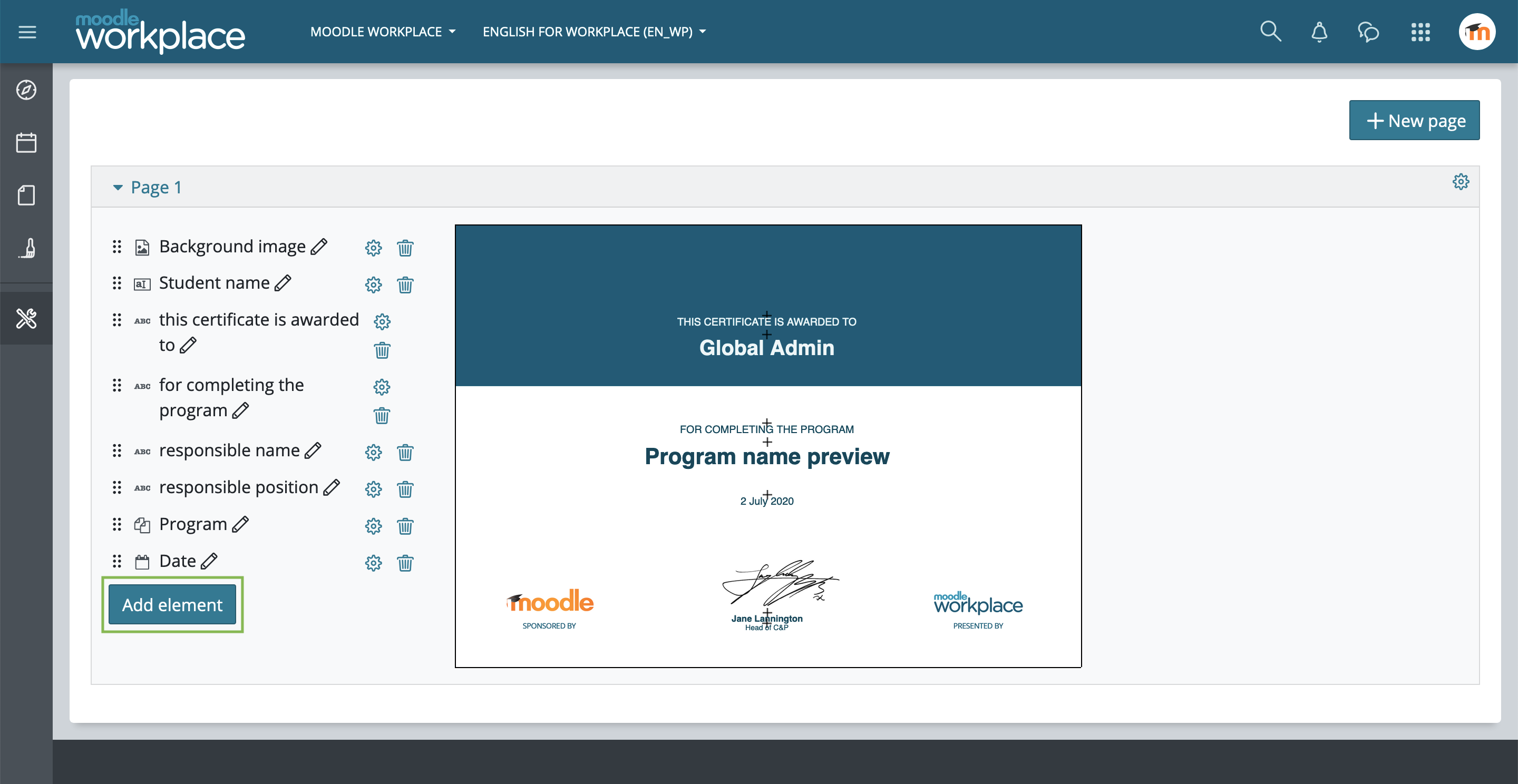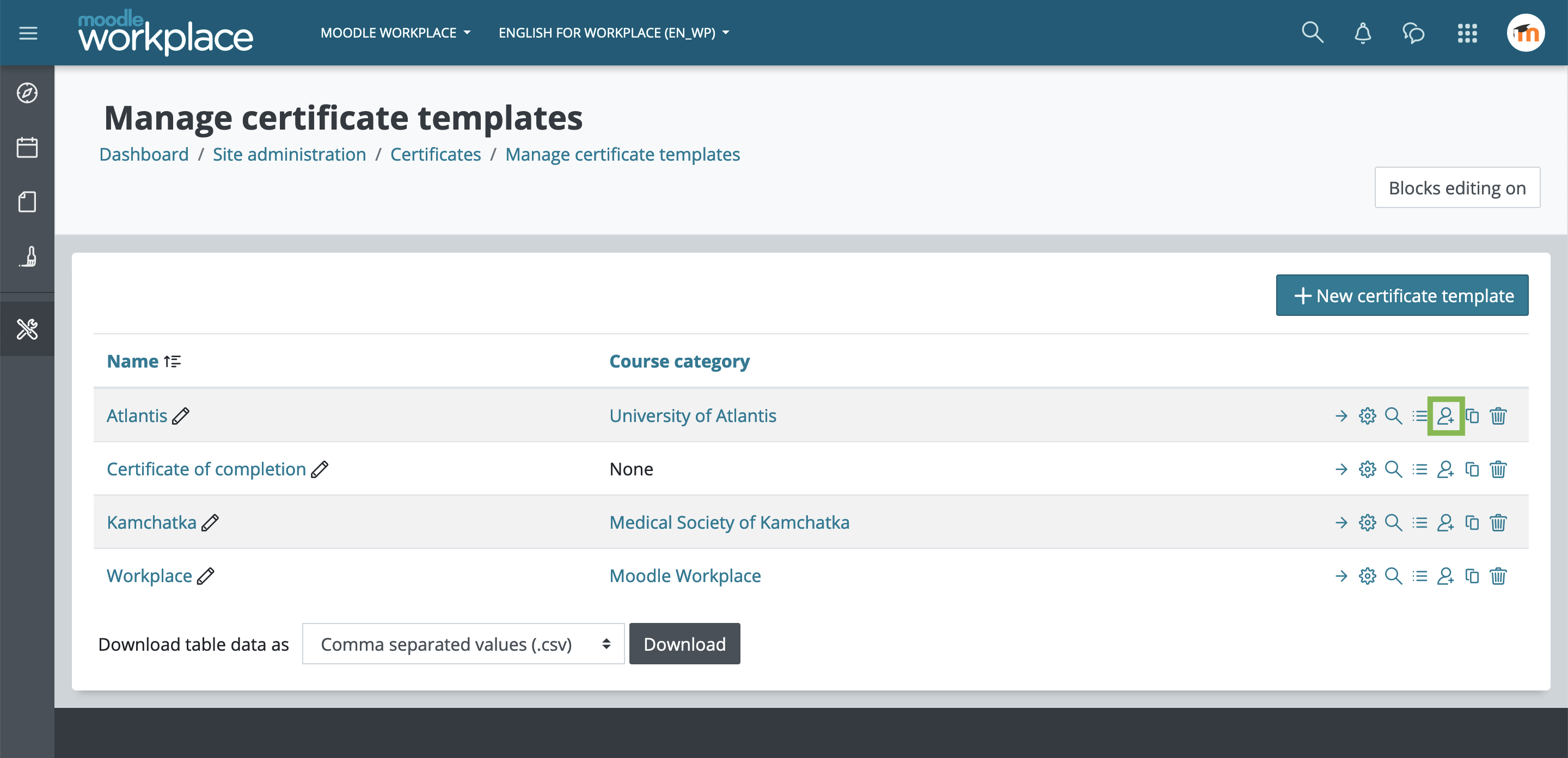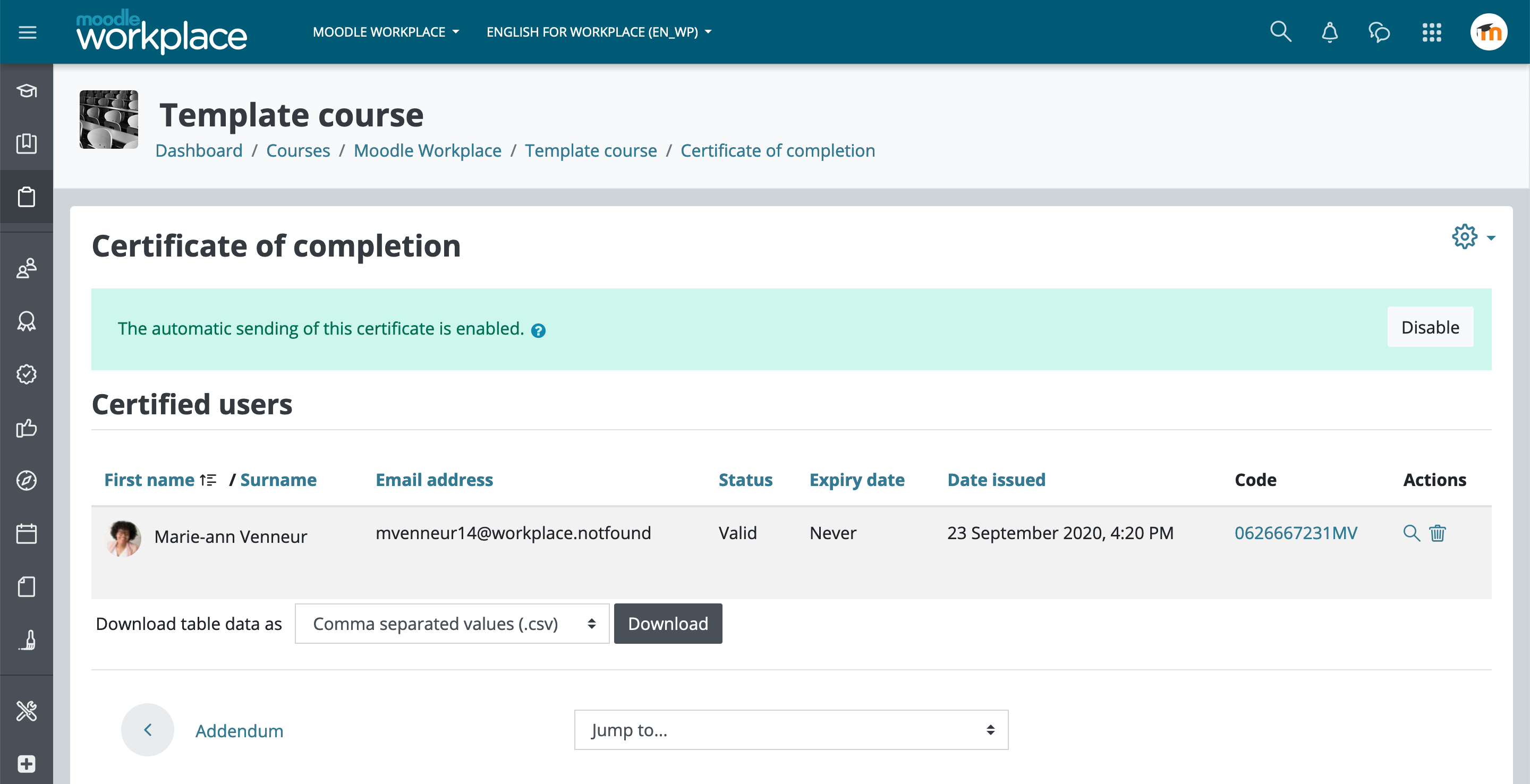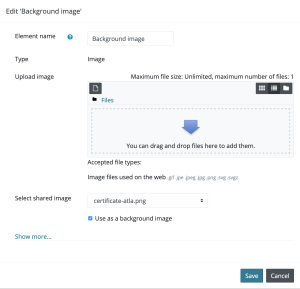Certificates: Difference between revisions
| Line 35: | Line 35: | ||
Other plugins can depend on the Certificate manager to issue certificates based on some criteria, for example the [[Certificate course activity|Course certificate (mod_coursecertificate)]] is an activity module that will automatically issue certificates when the student satisfies the access restrictions. The mod_coursecertificate plugin will send the course name and completion information to the tool_certificate plugin, so if these fields are included in the template, they will be displayed on the certificate. | Other plugins can depend on the Certificate manager to issue certificates based on some criteria, for example the [[Certificate course activity|Course certificate (mod_coursecertificate)]] is an activity module that will automatically issue certificates when the student satisfies the access restrictions. The mod_coursecertificate plugin will send the course name and completion information to the tool_certificate plugin, so if these fields are included in the template, they will be displayed on the certificate. | ||
In Moodle Workplace, this information can be sent to the certificate using Dynamic Rules as well. See | In Moodle Workplace, this information can be sent to the certificate using Dynamic Rules as well. See [[Certificates#Using_Dynamic_rules|Using Dynamic rules]] section below for more information. | ||
== Format elements == | == Format elements == | ||
Revision as of 13:42, 7 October 2020
Overview
Certificates are diplomas that can be issued upon completion of programs and certifications. Site-wide certificates can be created in Moodle Workplace, and certificates can be shared among tenants. The certificate is based on the Moodle custom certificate plug-in, but with added capabilities relevant to workplace tenants, and a completely redesigned interface.
This Workplace feature is also available in Moodle LMS (see Course certificate and Certificate manager plugins) but some features such as the certificate issuing through Dynamic Rules are only available in Moodle Workplace.
Adding a new certificate template
Certificates may be accessed instantly from the Workplace launcher. It can also be found in Site administration > Certificates > Manage certificate templates.
Click in the "New certificate template" button to add a new certificate template. Notice that it's called "template" because the actual certificates will be issued later by the Certificate course activity or Dynamic rules.
Add elements to a certificate template
We click on “Add elements” to choose which element you want to include on the certificate. By changing the order of the elements in the list it will change which element is displayed in front of another.
 wp-certificate-manually-issue.png
wp-certificate-manually-issue.png
Images
Click on “Image” to include images to the certificate template. To add background images select an image file and enable “Use as a background image”.
Static elements
Add static elements like "Border" or "Text". Since these elements are not dynamic (see below), they will be printed equally in al certificate issues.
Dynamic elements
Add dynamic elements like "Date", "User field", "User picture", etc. which will be filled automatically with the user data at the moment of issuing.
Dynamic fields
Other plugins can depend on the Certificate manager to issue certificates based on some criteria, for example the Course certificate (mod_coursecertificate) is an activity module that will automatically issue certificates when the student satisfies the access restrictions. The mod_coursecertificate plugin will send the course name and completion information to the tool_certificate plugin, so if these fields are included in the template, they will be displayed on the certificate.
In Moodle Workplace, this information can be sent to the certificate using Dynamic Rules as well. See Using Dynamic rules section below for more information.
Format elements
By clicking in the elements you will be able to edit its properties like colour or font size. You may also use drag and drop to place the elements wherever you want.
Add a new page
Certificates can have more than one page. Just click on the "New page" button to add it.
Issue certificates
As mentioned above, the certificate templates may be issued to users through the following methods.
Manually
 By clicking in the icon "Issue certificate from this template" (see image above) you will be able to issue manually this certificate to the selected users. You can set the expiring date for this certificate issue as well.
By clicking in the icon "Issue certificate from this template" (see image above) you will be able to issue manually this certificate to the selected users. You can set the expiring date for this certificate issue as well.
Using Dynamic rules
This functionality is only available in Moodle Workplace™
 You can use Dynamic rules to issue the certificates. Create a new rule, add the action "Issue certificate" and select which certificate template will be used. When the rule conditions are matched, the certificate will be issued to the affected users.
You can use Dynamic rules to issue the certificates. Create a new rule, add the action "Issue certificate" and select which certificate template will be used. When the rule conditions are matched, the certificate will be issued to the affected users.
Through the activity Course certificate
 You can also add the Certificate course activity so students can issue themselves the certificate when the activity is unlocked. The activity can also be set to issue the certificate automatically to users that have access to it.
You can also add the Certificate course activity so students can issue themselves the certificate when the activity is unlocked. The activity can also be set to issue the certificate automatically to users that have access to it.

